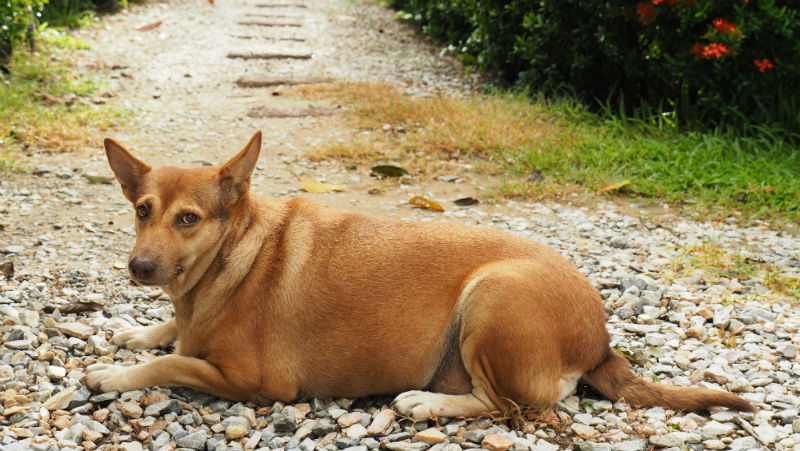According to the Association for Pet Obesity Prevention (2016), 54% of dogs in North America are overweight. It is a huge struggle that many pet owners have. Often the first thing that we have to do is to recognize that our pets are overweight, often a chubby pet is thought of as cute, and we need to change this mindset.In the exam room, many people will tell me that they are surprised that their dog is overweight because they are walked long and walked often. I recently read an article from Dr. Ernie Ward who discussed getting the most out of a walk when it comes to obesity. It is essential in a weight loss plan to appreciate that to lose weight a dog needs more than a casual stroll. I’ve taken and summarized some of the information from Dr. Ward’s article and hope it will help your dog get appropriately exercised; this is also something that will benefit us as well, we can bond with our dog and get exercise and fresh air.
The average pace that most dogs are walked is 15 minutes per kilometre. That is a stroll with frequent pauses, on average 1-2 stops/minute to allow your dog to sniff or pee/mark. A walk to lose weight requires a brisker pace without taking time to smell the roses.
Dr. Ward recommends starting the walk with the brisk/faster effort initially. Obviously different dogs need more exercise than others, and larger dogs need to walk faster than their smaller counterparts. It is ok for us to break into a light sweat, and we should feel like we are on a brisk walk without stopping. Don’t look down at your dog when they try to stop and smell something, continue walking ahead; you can tighten the leash without pulling or jerking it and use commands such as “keep up” or “come.” Dogs will recognize that this is a different type of walk and they will usually look forward to it. Dr. Ward suggests using a head halter as they are a tool that we can use when training dogs to heel during a fast walk it will also help them to keep focused. If it doesn’t go well the first time and your dog refuses to walk, it’s ok to allow them to go home and try the next day again; most dogs will learn to love an active walk.
Dr. Ward has created a chart for those couch dogs who need to start out slow, for most overweight or obese dogs that have no other pre-existing medical issues, he recommends starting with thirty-minute walks a minimum of five times per week.
A sample schedule follows
Week 1: 30 minutes total – 10 minutes brisk followed by 20 minutes casual pace
Week 2: 30 minutes total – 15 minutes brisk followed by 15 minutes casual pace
Week 3: 30 minutes total – 20 minutes brisk followed by 10 minutes casual pace
Week 4: 35-40 minutes total – 30 minutes brisk followed by 5-10 minutes casual pace
Week 5+: 35-60 minutes total – Try to do two 20-30 minute walks per day: 15-25 minutes brisk, followed by 5 minutes casual pace.
Written by Jane Corkum, DVM




